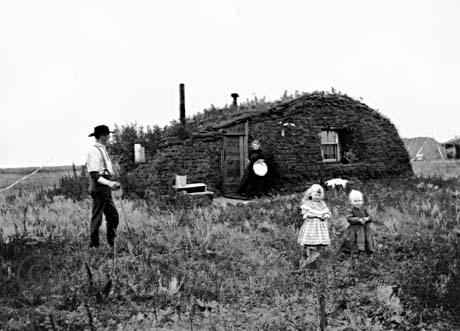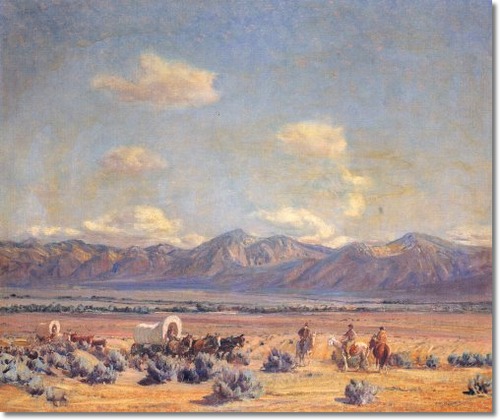
Homesteaders cross the 100th meridan onto the arid plains
By 1870, the hundredth meridian - a north-south line running across
the high plains that marked the eastern boundary of the arid West,
had been crossed by farmers. The dense black earth of the
plains was now being turned under the plow, and a great flood of
humanity poured in across the unmapped portions of the west that
were still marked as Indian territory on official maps.

Homesteaders headed into the arid West - a
country with little moisture and poor soil.
Homesteaders crossed the 100th
meridian, an isohyte boundary between aridity and plentiful rain
which too often marked the difference between success and
failure.
click here for more
Pushed west by
withering droughts in the East, potato famine Irish swept over the
plains like a human tsunami. In a blink of time, wrote Hamlin
Garland, a homesteader in Iowa, "all the wild things died or
hurried away, never to return. The tender plants, the sweet
flowers, the fragrant fruits, the busy insects, prairie
wolves...all of the swarming lives which had been native here for
countless centuries, are gone."